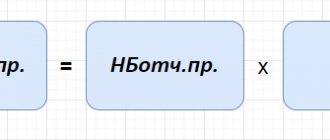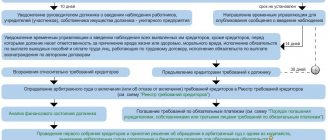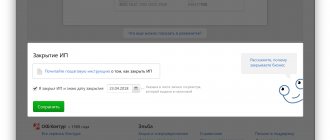Personal bankruptcy often involves expenses beyond what debtors must pay to creditors. Such expenses can be foreseen, but their exact amount can be difficult to determine. That is why, before resorting to bankruptcy proceedings, it is necessary to determine all the consequences of such a responsible step and how this could turn out for the debtor. It is clear that the debtor will lose his property, but even after he does this, he will need to pay the so-called current expenses. Therefore, we will figure out what exactly is called current payments in bankruptcy and what terrible things can happen if current payments are not repaid.
What are current payments in bankruptcy?
Current payments in bankruptcy cases of individuals or legal entities are the financial obligations of the bankrupt that appeared after the receipt of the application for bankruptcy status. That is, current debt refers to expenses that appear regardless of whether a person is considered bankrupt or not. The debtor also has registered debts, which are included in the register in advance as soon as a bankruptcy case is opened.
The problem is that most of the events that are carried out during bankruptcy are aimed solely at paying off registry expenses. But bankrupts still have the problem of paying off current expenses, because no one intends to write them off. As a result, the amount of debt increases and requires repayment. Among the most frequently appearing expense items are:
- Severance payments to employees of a company that has found itself in a difficult situation and has begun bankruptcy proceedings;
- Salaries of employees who work in a bankrupt company or for an individual entrepreneur;
- Compensation payments to employees who unexpectedly lost their jobs (especially if a contract was signed with them for several years of cooperation) if the enterprise or company was liquidated due to bankruptcy;
- Various fines and penalties imposed on the bankrupt;
- Liabilities to the tax authorities, previously suspended due to the bankruptcy procedure;
- Payment for services provided to a bankrupt company or person, especially if they are specified in the contract;
- Payments for goods, if they were provided before the bankruptcy process;
- Payment of rent, if a person or company rented real estate, etc.;
- Any fines, penalties and penalties that arise are also paid;
- Interest on the use of borrowed (credit) funds from financial obligations that appeared after the commencement of the bankruptcy case;
- Compensation for losses arising due to poor performance of one’s duties, etc.
In addition to the rather impressive list presented above, the alleged bankrupt must pay all legal costs. Therefore, the list is supplemented by the consulting services of notaries and lawyers, as well as their work if the specialists provided other types of professional support to the client. That is, current payments include those that were formed after the bankruptcy procedure began, or those related to agreements signed before the bankruptcy began.
Order of payments in a bankruptcy case
The money supply (if it exists at all) that is collected to pay creditors is constantly shrinking. Satisfaction of creditors' claims occurs in order of priority (although proportional payments also occur). There are often cases when creditors at the very end of the queue are left without payments, which indicates the limited rights of secondary creditors.
The ordering of payments looks like this:
First of all:
- payment of legal costs associated with the consideration of this case;
- payments to creditors;
- the financial manager (the person replacing him).
Second:
- various payments to dismissed employees (salaries, benefits);
- payment for the work of persons engaged by the financial manager.
Third:
- payment of housing and communal services debts;
- on lease obligations;
- satisfaction of tax requirements;
- add. payment to employees (previously agreed upon, but exceeding established limits);
- payment for other requirements (fines, penalties, etc.)
Fourth: the rest.
The difference between current payments and registered ones
After the start of the case for obtaining the status of a bankrupt person, all detected and appeared payments can be divided into two groups:
- The first group includes registered payments, which are entered into a special register (hence the name) and are carried out in a certain order;
- The second group includes current requirements in bankruptcy cases.
In addition, users are often interested not only in what current payments are, but also how to distinguish them from registered ones, because the peculiarity of current payments is their prevailing nature.
The situation is quite simple to explain. The fact is that bankruptcy is filed if a person or organization cannot cope with the debts that have arisen and they accumulate over some time. The debtor will no longer be able to deal with them on his own. In this case, he may begin bankruptcy proceedings. As soon as the procedure starts working, all registered debts stop accumulating and are frozen. And creditors must include the fixed amounts in the register, otherwise they will not be repaid or will take last place in the queue. This automatically means: it is not a fact that the money received from the debtor’s property will be enough to cover them.
However, it often takes several years to obtain a bankruptcy certificate. This is a complex and multi-step process. Naturally, during this time, new financial expenses may arise that need to be covered somehow. As already mentioned, this could be salaries for employees, business expenses, etc. It doesn’t matter whether we are talking about individuals or legal entities.
Since these payments arrive regularly and do not stop, they are called current. Such debts must be repaid first. But such an approach can be perceived incorrectly as a screen for evading registered debts.
The size of debts for current payments cannot be foreseen or planned, since many parameters that are difficult to predict must be taken into account. In addition, before a person is declared bankrupt, most likely he will be forced to undergo the procedure of reorganization or external administration (or perhaps both). And organizing production activities is always associated with costs that may not be justified. As a result, registered creditors will have to wait until current debts are paid. Thus, registry and current payments during bankruptcy are interrelated, but current payments are still much more priority, since if the debtor can reach a normal financial level, he may be able to pay the debts included in the registry.
Formation of current payments in the bankruptcy procedure
The financial obligations that an enterprise has after the application for its bankruptcy has been accepted for consideration by the arbitration court are called “current payments.”
From the above it follows that only monetary obligations of the debtor enterprise that appeared to it after its financial insolvency case started can be recognized as current payments in the bankruptcy procedure. And payments for which obligations arose before this circumstance cannot be considered current.
What are current payments made up of in bankruptcy proceedings?
The most common current payments in bankruptcy proceedings, for which demands are made during the procedure for recognizing the financial insolvency of an enterprise, include:
- salaries, dismissal benefits, all kinds of compensation for employees dismissed due to the termination of the activities of a financially insolvent legal entity;
- taxes that the organization had to pay, but due to the introduction of bankruptcy proceedings against it, this need has temporarily disappeared;
- fines and penalties, payment for which was also temporarily delayed while the trial took place;
- current invoices for goods delivered before the enterprise was declared financially insolvent;
- payment for work or services previously performed in accordance with contracts, under the terms of which the transfer of money should have taken place after a court decision was made to declare the organization bankrupt;
- post-paid rental payments;
- court costs, payment for legal consultations, paperwork for legal needs;
- penalties incurred in the process of selling the bankrupt’s property in bankruptcy proceedings.
The main ones among the current payments in bankruptcy proceedings that must be made first are wages and other payments to employees made at the time of their dismissal from the bankrupt enterprise. They must be produced in due time and in full.
Requirements for current payments
Requirements for current payments in bankruptcy proceedings can be divided into two groups:
- payments that the debtor enterprise, in accordance with contractual or other conditions, assumed an obligation to fulfill within the period that occurred after the court ruling on bankruptcy, but during the period of concluding the contractual relationship the parties could not foresee such a circumstance;
- payment demands of creditors or government agencies under agreements signed before the application for financial insolvency was accepted, but taking into account the upcoming bankruptcy, the deadline for fulfilling obligations is provided for in the period following the declaration of insolvency.
The order of repayment of current payments in bankruptcy proceedings
The procedure for paying current payments in bankruptcy proceedings is as follows.
- First of all, claims related to legal expenses in a bankruptcy case of a legal entity are paid, payment is made for the services of the arbitration manager, as well as debts for payment for the services of managers and current payments, the need for which arose in the course of the activities of the managers.
- The second in order are paid salaries and other current payments regulated by law for the given circumstances to employees who were on the staff of the organization until it was declared bankrupt.
- The third in order of mandatory current payments in bankruptcy proceedings are payments to people whose help the bankruptcy trustee turned to in order to implement his functions in this process.
- This is followed by utility and other expenses associated with the activities carried out by the bankrupt enterprise.
- All other current requirements are fulfilled last.
How are current claims paid?
Funds received as a result of the sale of property in bankruptcy proceedings belonging to a bankrupt organization are credited to a single current account. Other accounts of the company are liquidated. Current requirements are satisfied from the money received from the sale of the property.
When for some reason it is not possible to transfer money to the creditor’s account, it is deposited into the notary’s account. The lender must transfer them to him within 3 years, otherwise they will go to the state budget.
The arbitration manager must make all payments for current payments in bankruptcy proceedings. These payments are made in strict order established by law.
How to recover current payments in bankruptcy proceedings
Financial insolvency legislation regulates the collection of current claims in bankruptcy proceedings. First, you need to file a claim with the bankrupt or bankruptcy trustee handling the case. This requirement must indicate the moment the debt arose, whether this occurred before the organization was declared insolvent or after.
If the bankruptcy trustee refused to recognize the legitimacy of the claims of this creditor and make payment in favor of him, then it is necessary to file a corresponding claim in court. The status of the current payment in bankruptcy proceedings must be justified with documentation. The court will decide in what order this claim should be satisfied. After this, collection will be carried out.
Register of current payments
The law regulates the procedure for entering information about current payments into a special register. This responsibility, as well as the need to timely amend it, rests with the arbitration manager. Current payments do not appear in the manager's standard reporting. Therefore, information about them is indicated separately.
Settlement for current payments
Offsetting current payments in bankruptcy proceedings is permitted only when it is possible to fulfill the requirements for the order of payments before other creditors, as well as to maintain the necessary proportions for satisfying all claims.
Features of current payments in bankruptcy proceedings
Current payments currently, according to the law, do not differ depending on belonging to one or another stage of the financial insolvency case. They are not taken into account in the main register of requirements.
Ongoing bankruptcy payments are generally collected outside of the bankruptcy case. Creditors involved in this process are not recognized as participants in the bankruptcy case. Such debt is repaid during enforcement proceedings.
A special procedure for paying claims on loans issued on the security of any property of the bankrupt is provided for by the law on financial insolvency. According to it, the money remaining after the sale of the collateral is transferred to an account used to repay the remaining claims of creditors, pay legal costs and settle settlements with the bankruptcy trustee.
Categories
In bankruptcy, register payments are not the only type of financial obligation that is mandatory for the debtor. The current types of payments are considered priority. They are divided into two categories:
- Obligations initiated before the commencement of bankruptcy proceedings, but the fulfillment of which began after bankruptcy proceedings began. The parties to an agreement concluded under such circumstances could not foresee the critical situation that provoked financial difficulties.
- Obligations to creditors, agreements with which were signed before filing for bankruptcy, but came into force after the person became involved in the case.
Such cases relate to current payments because they could not be foreseen or they accompany the stabilization of the debtor’s financial situation. But payments of the current type have a preferential registration procedure, thanks to which the claims of creditors are not entered into the general register. They will be activated separately, and earlier than payments to other creditors.
True, creditors for current payments cannot be recognized participants in the case and cannot influence the process of declaring a person bankrupt and the competitive sale of property. But such requirements are fulfilled first and foremost as soon as they appear.
Current Requirements
Claims made by current creditors fall into two categories:
- Obligations under contracts concluded before the debtor was declared bankrupt, provided that at the time of their signing the citizen or company did not assume that they would be declared financially insolvent.
- Obligations under contracts drawn up before the person was declared bankrupt, taking into account the fact that this fact is known to the parties, and they agreed on payment after the declaration of financial insolvency.
This is also important to know:
Bankruptcy of individuals: what do real reviews of those who have undergone the insolvency procedure say?
Creditors of both groups can count on a special debt repayment regime. Its essence lies in the fact that current obligations are not included in the register of claims against debtors, but are repaid in calendar order, taking into account the norms of Art. 855 of the Civil Code of the Russian Federation.
Procedure for repayment of current payments
Current payments of legal entities in bankruptcy proceedings include:
- Monetary obligations under contracts concluded within the framework of civil law relations before the start of the procedure (Article 2 of Law No. 127-FZ).
- Remuneration of employees of a bankrupt company (salaries, bonuses, compensation, severance pay).
- Mandatory payments to the budget (taxes, fees, penalties, fines).
Important
In the Resolution of the Plenum of the Supreme Arbitration Court of the Russian Federation No. 63, it was explained that current claims are subject to repayment only in cash.
Free legal consultation
Free legal consultation We will answer your question in 5 minutes!
Ask a Question
We will answer your question in 5 minutes!
Ask a Question
Collection of current payments in the event of bankruptcy of companies and individuals is carried out in the following order:
- Alimony, payments to the bankruptcy trustee and remuneration to persons hired by him to assist in the performance of duties, legal costs.
- Arrears of wages and severance pay.
- Maintenance of premises and utilities.
- Other current requirements.
Since current claims are satisfied first, the bankruptcy trustee must be notified of their existence. For this purpose, a corresponding application is drawn up.
If it is discovered that current requirements have been incorrectly entered into the register, they must be removed from there. To do this, the creditor company needs to apply to the arbitration court with a corresponding claim.
Based on the procedural norms of the Arbitration Procedure Code of the Russian Federation, the judge makes a decision to recognize the claims as current, after which the creditor can file a claim to recover funds in the general manner (Article 4 of Law No. 127-FZ). After receiving a copy of the arbitration court decision, the bailiff completes the proceedings, generates enforcement documentation and sends it to the credit institution where the bankrupt has a current account.
Important
If desired, the creditor can receive the writ of execution in hand and independently submit it to the bank.
Governing legislation
Issues related to the collection of current payments in bankruptcy proceedings are resolved by the arbitration court, which is guided not by personal needs or preferences, but by the basis of laws that provide for the process of creating a register of current payments in bankruptcy. production. This bankruptcy law is Federal Law No. 127. Despite the fact that it was adopted back in 2002, thanks to amendments made in 2020, it still continues to be relevant.
Let's consider the main points of the Federal Law on bankruptcy, which will help you understand the main nuances of how to get into the register of current payments:
- The first paragraph of the fifth article helps to understand the concept of payments and the principle of their creation;
- The second and third paragraphs of the article talk about the claims of creditors that appeared after the end of the trial on the debtor’s insolvency. Specifically, such claims cannot be included in the register, since they appear after the court has made a decision (for example, about the bankruptcy of a developer). But this does not mean that such demands will not be satisfied. It's just that their order shifts a little;
- Article 96 talks about a moratorium, which may apply to certain types of payments. But it can be removed as soon as the trial is over;
- Paragraph one of Article 134 says that it is possible to make current payments and put them in the register. This directly determines who will receive the money first. For example, the first to receive financial compensation will be the creditors whose information was entered first even before the court hearings began;
- The third paragraph talks about complaints against financial authorities if they go to court. Often such complaints are received if a specialist is inactive or poorly performs his professional duties. Sometimes, thanks to complaints, the court changes the order of creditors;
- If the amount of claims is greater than provided for by labor legislation, you can read more about this problem in paragraph 2.1. These claims will be considered current, but their repayment will be carried out in the third stage.
As is clear from the above, many requirements directly depend on the professionalism and responsibility of the manager. This affects how fully court decisions will be implemented and whether all creditors will receive compensation.
If suspicions arise about dishonest work or negligence, then a complaint against the manager can be sent to the arbitration court, at the plenum of which it will be considered. In addition, such a complaint must be sent to the managers themselves.
By law
The main legislative act on which all lawyers, advocates and judges rely in the case of recognizing a debtor as a financially insolvent person is Federal Law No. 127-FZ of October 26, 2002, which was edited on December 29, 2015. (hereinafter referred to as the Law).
It is worth stopping separately to consider some of the details of current payments, which are regulated by this legislative act.
The following articles of the law relate to the issue of the specifics of the implementation of current payments and related nuances:
| Clause 1 Article 5 | the concept of current payments and where they come from |
| paragraph 2-3 article 5 | the claims of those creditors who appeared after the bankruptcy court decision are not included in the register by law, because they are subject to consideration in the second place, after all the claims of the primary creditors have been satisfied |
| Art.95 | on a moratorium imposed on certain types of payments, which subsequently, when the ban is lifted, may become current payments |
| Clause 1 Article 134 | When making current payments and accepting them into its register (at the request of the manager), the manager is obliged to respect the priority of payments to those creditors whose claims were filed in arbitration even before the final decision on the debtor’s bankruptcy was made |
| Clause 3 Article 134 | if the court received a complaint regarding current payments regarding the inaction of the bankruptcy trustee, then the court determines a different amount and priority for fulfilling the creditor’s claims |
| Clause 2.1 Article 134 | excess amounts that went beyond the terms of labor legislation will be current requirements that managers must be included in the register and paid in third order |
| Clause 4 Article 20.4 | if damage is caused to the debtor, creditor and other persons in his dishonest work, the arbitration manager is obliged to pay not only current payments, but also penalties, penalties and fines as compensation for the material damage caused |
Indeed, much depends on the responsibility or irresponsibility of the arbitration manager in the process of fulfilling the requirements of the court decision and creditors.
In those cases when the arbitration court, in response to a creditor's claim against the manager accusing him of inaction, which resulted in damage to payments in bankruptcy, acquits the manager, declaring him innocent, then the claim should be sent directly to the manager himself.
In this case, the creditor has every right to demand from the manager not only current payments, but also a penalty in compensation for damage caused by failure to comply with the requirements for current payments by court decision.
This occurs quite often in judicial practice and is regulated, for example, by Resolution of the Federal Antimonopoly Service UO No. A07-17200/2012 dated June 28, 2013.
The arbitration manager is faced with the task of compensating damages (and, possibly, not only to creditors, but also to the debtor himself), plus making current payments in the debtor’s bankruptcy case.
With the advent of pension reforms, for example, cases of NPF debts to citizens of the Russian Federation have become more frequent. The Non-State Pension Fund is obliged to carry out activities for making current payments to employees, pensioners or other creditors on the basis of Article 187.5 of the Law.
Similar proceedings can also be carried out in the field of construction of new housing, where current payments in the bankruptcy case of the developer must also be made to all creditors in a certain order (Article 201.15).
There are actually many examples, and all of them can illuminate not only the areas of activity or inactivity of legal entities, but also individual entrepreneurs and citizens of Russia.
Each such area is covered by articles and paragraphs of the Law, therefore, each person authorized by the court to conduct bankruptcy cases for the sale of property and payments to creditors should carefully consider the legislation and avoid sanctioned current payments.
Collection procedure
Let's consider the question of how current payments will be collected in bankruptcy. The algorithm for this procedure is multi-stage, but it can be completed without unnecessary problems. So, the debtor is expected to do the following:
- Compose and submit a petition (in written format). It must be sent to the address of the debtor or financial manager. But the text needs to mention what kind of debt we are talking about: the one that arose after the end of the bankruptcy case, or the one that arose after the filing of the claim. This will determine how current payments are collected in bankruptcy. Sometimes it is enough to simply file a complaint with the financial authorities, but if he is negligent in his duties, there is no way out of filing a lawsuit;
- Additional payments are indicated in a separate register of the manager, after which an invoice is sent to the bank to write off the required amount of money;
- If the financial authority refuses to fulfill financial obligations, the collection procedure involves filing a statement of claim in court, which requires recognition of the payment as current and its reimbursement. As evidence, you can attach documents confirming the current status of the payment;
- If the claim is accepted, the court will begin the process of determining whether the payment is in fact current. Typically, such payments are added to one queue or entered into an additional, extraordinary register. Extraordinary payments are paid in order, having a fixed date.
The financial authority must comply with the court decision. If he ignores it, penalties and fines will be imposed on him. Also, the manager’s inaction may be regarded as causing damage. There are cases when the request is not granted. Then you can demand clarification of the situation by submitting a written application. If the answer contains little clarification or does not come at all, you can file an appeal against the issue.
You need to know for sure what documents will be needed when applying to the judicial authorities. For example, you will definitely need:
- Passport of the person filing the claim;
- Direct claim;
- Evidence of non-payment of mandatory payments;
- Checks;
- Papers confirming bankruptcy.
Payments are made in a separate case parallel to the bankruptcy case. Debt compensation is carried out in several steps:
- First of all, legal costs and financial services fees are compensated.
- Secondly, severance pay is reimbursed to employees of bankrupt enterprises.
- Next, they pay for utilities, rent, taxes, fines, etc.
After all the listed payments are compensated, the remaining debts will be compensated.
Deadlines for collection of current payments
Collection of current payments in bankruptcy is carried out within a certain period in accordance with the court decision. Initially, the competitive terms of the current debt are observed. Only after the money from the sale of the debtor's property is received into the account are other debts paid.
The terms for current debt can be extended, but only after agreeing on this issue with the arbitration manager. In this case, the deadline is set individually. True, there is a nuance regarding the amount above the minimum threshold established by law: it is paid in the third stage. There are no more precise dates, since payments are made according to the queue.
Register payments
When carrying out a bankruptcy procedure, there are not only current payments, but also special payments aimed at repaying existing debts of companies. In accordance with the current norms of the Federal Law “On Insolvency (Bankruptcy)”, such payments are usually called register payments. These payments are made only for those obligations that arose before the introduction of the bankruptcy procedure of the debtor legal entity.
Register payments currently include the following payments:
- payment of severance pay to those employees who terminated their employment relationship with the debtor company before the introduction of bankruptcy proceedings;
- payment of arrears of wages to employees, if such arrears also arose before the introduction of bankruptcy proceedings for a legal entity;
- payment of compensation for debts on payments aimed at satisfying the claims of persons who, through the fault of the company, suffered harm to health or life;
- debts to authorized state bodies and funds (we are talking about the Federal Tax Service, the Social Insurance Fund, the Pension Fund of the Russian Federation);
- payments to creditors to satisfy existing claims submitted to the register of claims , if we are talking about agreements that were concluded before the date of introduction of bankruptcy proceedings in relation to the debtor legal entity;
- Register payments also include those payments that are aimed at repaying debts on mandatory payments , if such debts arose before the date of entry into force of the court decision to conduct bankruptcy proceedings in relation to the debtor legal entity.
Payment of registry fees to liquidate existing registry debts serves as the main goal of the entire bankruptcy procedure.
In order to pay off a registered debt, the court must approve a special repayment schedule, drawn up in such a way as to take into account the interests of all participants in the process, as well as provide the debtor with the opportunity for his financial recovery and exit from the current crisis.










